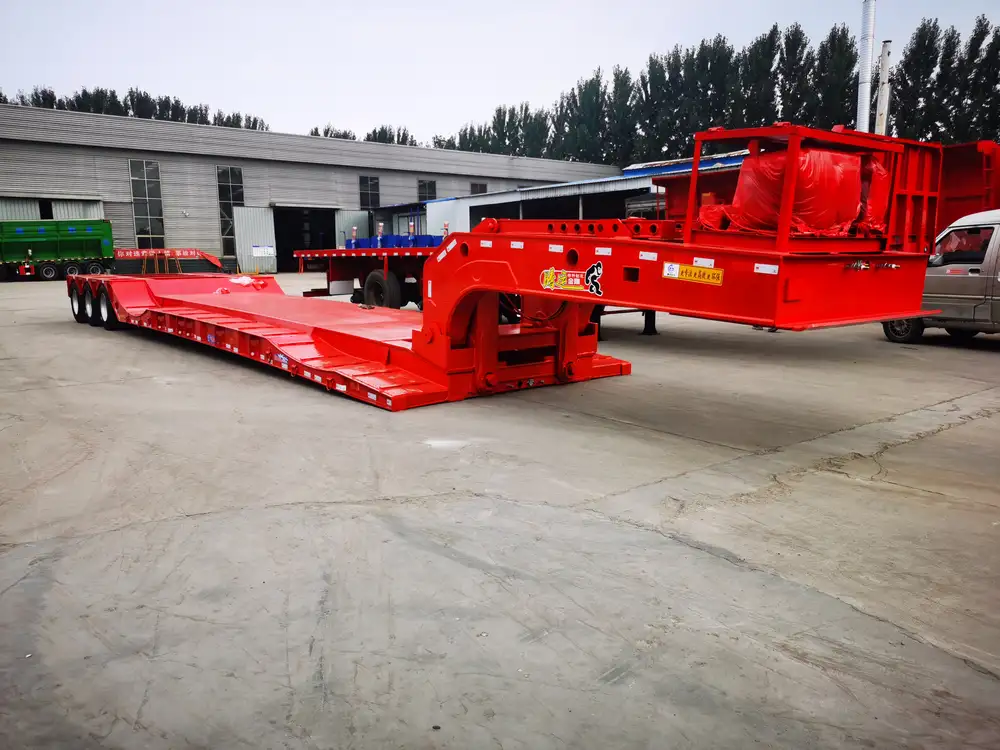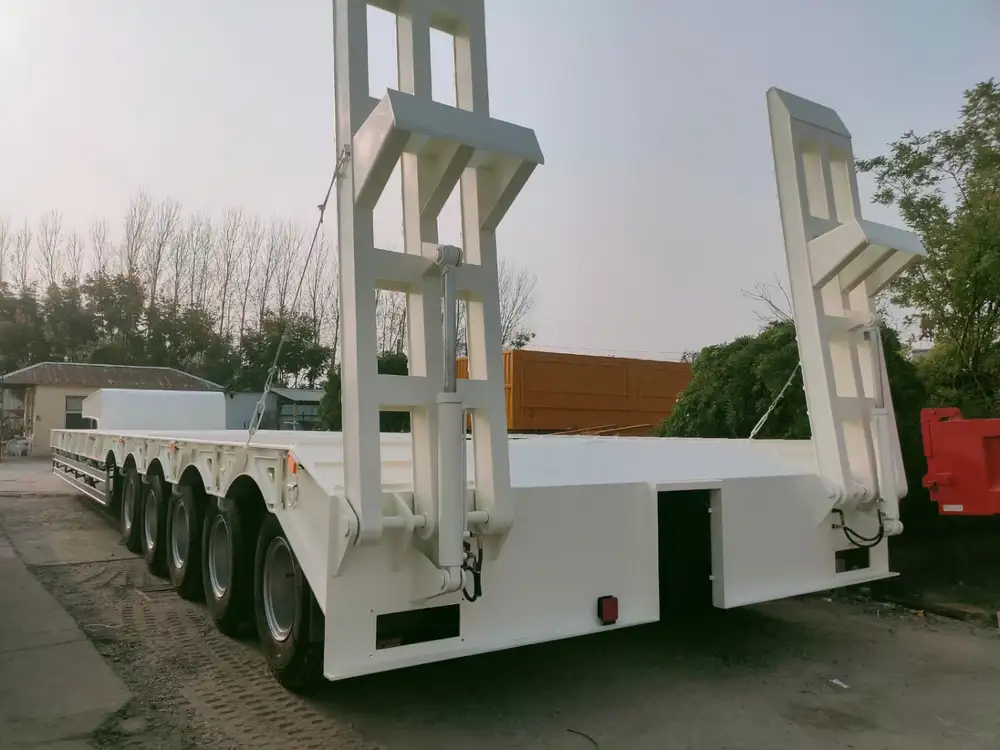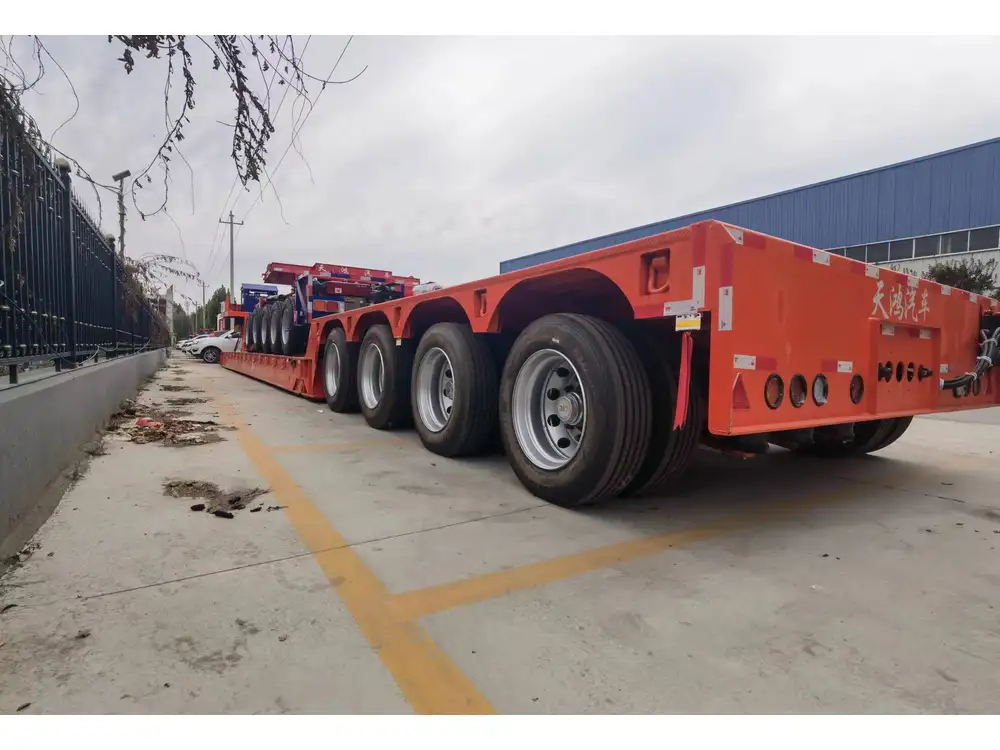The transportation industry relies extensively on the efficiency and safety of semi-trailers to transport goods across vast distances. As semi-trailer manufacturers, it’s critical to grasp the environmental factors that can influence the performance of these vehicles. One notable factor is wind speed. Determining the wind speed that a semi-trailer can withstand is vital not only for operational safety but also for regulatory compliance and transportation planning.
Factors Affecting Wind Resistance in Semi-Trailers
1. Design and Structural Integrity
The design and construction materials employed in semi-trailer manufacturing play pivotal roles in determining wind resistance. Key factors include:
- Aerodynamics: Semi-trailers with streamlined designs experience less aerodynamic drag, enabling them to withstand higher wind speeds.
- Structural Materials: Utilizing lightweight yet sturdy materials, such as aluminum alloys or high-strength steel, can enhance durability while minimizing weight.

2. Weight Distribution
A semi-trailer’s load and its distribution also significantly affect its performance in adverse wind conditions. Heavier trailers tend to be more stable; however, uneven weight distribution can lead to an increased risk of tipping.
- Loaded vs. Unloaded Trailers: An unloaded semi-trailer is at a higher risk of losing stability in strong winds due to its lightweight nature.
- Cargo Types: Certain types of cargo may shift during transit, leading to changes in weight distribution that could alter wind resistance.
3. Wind Direction and Flow
The impact of wind is not merely a function of its speed; direction and flow are equally important:
- Crosswinds vs. Headwinds: Crosswinds pose a greater challenge for stability as they push against the side of the trailer, potentially causing it to sway or tip.
- Wind Turbulence: The proximity of the semi-trailer to other vehicles and roadside structures can create turbulent airflow, exacerbating instability.
4. Design Standards and Regulations
Manufacturers must adhere to strict safety regulations set forth by transportation safety organizations. These standards often include specifications for handling extreme weather conditions, including high winds.
| Design Feature | Impact on Wind Resistance |
|---|---|
| Aerodynamic Shape | Reduces drag, improves stability |
| Load Distribution | Helps maintain center of gravity |
| Weight | Heavier vehicles withstand wind better |
| Height | Taller trailers face greater wind resistance |

Determining the Maximum Wind Speed for Safe Operations
General Guidelines
While various factors contribute to wind resistance, several established guidelines can aid in determining safe operational speeds given various wind conditions. These guidelines are generally based on empirical data, simulations, and real-world experiences.
Calm Conditions (Up to 20 mph): Semi-trailers can operate normally, with minimal risk from wind.
Moderate Winds (20 – 35 mph): Operators should remain vigilant. Proper cargo securing becomes crucial, and drivers should be trained to manage potential sway.
Strong Winds (35 – 50 mph): Caution is critical. It is advisable to reduce speeds significantly. Trailers not loaded optimally may exhibit instability.
Severe Winds (Over 50 mph): It is advised to cease operations. At these wind speeds, the likelihood of a trailer overturning increases significantly, especially for those lacking cargo weight.
Case Studies and Empirical Data
Research demonstrates that semi-trailers begin to experience significant aerodynamic lift and instability at winds above 35 mph. Several studies have indicated that:
- Tipping Point: The tipping point can often occur with sustained wind speeds above 50 mph, particularly for high-profile trailers.
- Effect of Height: The increased height of the trailer adds lever arm length, making it susceptible to tipping effects under crosswinds.

Real-World Operational Recommendations
Safety Practices for High Winds
To mitigate risks during adverse weather conditions, we propose several operational best practices:
- Driver Training: Ensuring drivers have adequate training to recognize hazardous conditions and respond appropriately is critical.
- Cargo Management: Regular checks to secure cargo can help maintain a low center of gravity, enhancing stability.
- Route Planning: Avoiding routes prone to high winds, such as open areas or poorly sheltered roads, can reduce risks.
- Weather Monitoring: Utilizing technology to monitor weather updates allows for proactive measures, such as avoiding travel during high-wind alerts.
Technology to Enhance Safety
Incorporating advanced technology can aid semi-trailer manufacturers and operators in enhancing safety measures during high winds:
- Telematics Systems: Implementing telematics can assist in tracking trailer stability and weather forecasts in real time.
- Stability Control Systems: Many modern semi-trailers are outfitted with systems designed to detect and counteract sway and tilt.

Analyzing the Cost Implications of Wind Resistance
Financial Consequences of Tipping
A key consideration in understanding the impact of wind resistance is the significant financial repercussions stemming from tipping incidents:
| Category | Cost Implication |
|---|---|
| Vehicle Damage | Up to $100,000+ per incident |
| Cargo Loss | Up to $200,000 depending on the load |
| Regulatory Fines | Significant fines for unsafe operations |
| Increased Insurance Rates | Potential for higher premiums due to safety violations |
Long-Term Implications of Inadequate Design
Inadequate design and planning not only risk immediate financial damages but can also have long-term repercussions for manufacturers and operators:
- Reputation: Frequent incidents stemming from inadequate designs can tarnish a manufacturer’s reputation.
- Litigation Risks: Increased liability may lead to costly lawsuits, both from drivers and businesses reliant on timely deliveries.

Conclusion: Emphasizing Comprehensive Design and Operational Strategies
In summary, understanding wind resistance and the limits of semi-trailers in extreme weather conditions is paramount for ensuring the safety of drivers and the integrity of cargo. Manufacturers must focus not only on design aspects that enhance wind resistance but also on operational protocols that ensure trucks are managed safely.
Key Takeaways
- Wind resistance markedly affects the performance and safety of semi-trailers.
- Factors like trailer design, load, weight distribution, and environmental conditions play critical roles.
- Operational practices, driver training, and technology implementation are key to mitigating risks associated with high winds.
- Understanding the financial implications of inadequate wind resistance measures is essential for sustainable operations.
By adhering to the aforementioned guidelines and consistently enhancing design and operational strategies, manufacturers can ensure that their semi-trailers withstand the elements effectively while delivering safety and efficiency on the road.



